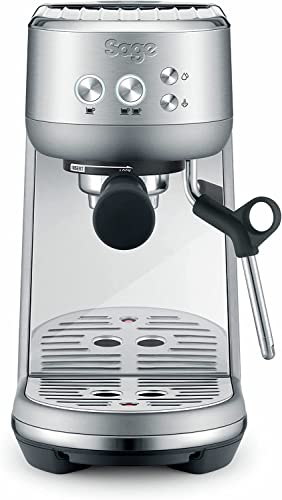How Does Machine Espresso Work?
Machine espresso utilizes precise pressure and incredible filter technology to produce the perfect cup of coffee. How exactly does it work?
Espresso is made by forcing hot water at high pressure through finely ground coffee. The process is similar to making drip coffee but the major difference is in the pressure.
The Group Head
The name implies the group head is where you place your portafilter when brewing espresso. It disperses the water into the portafilter, and then regulates the pressure of the extraction. There are a variety of types of group head, each with their distinct advantages and disadvantages. Some are designed for stability of temperature while others are built to handle pre-infusion. Some are designed to control the lever. Some include a combination such as the E61. This is a preferred choice for baristas due to the fact that it has multiple benefits in a single package.
As you can see from the photo above the head of the group is fitted with a variety of notches. You place your portafilter into these notches and twist the head to lock it. A gasket made of rubber is positioned inside the notches, which helps create a seal as you insert your portafilter. The notches on the head allow for a precise placement of the portafilter, which is essential for a consistent extraction.
In addition to allowing you to easily place your portafilter in, the group head is responsible to ensure that the temperature remains even. It does this by cycling hot water through the brew pan and around the portafilter, making sure that it is always at the correct temperature to extract. It is important to remember that even a small difference can make the difference between a good and a great espresso.
The Pump
The motorized pumps used in rotary espresso machines supply the nine atmospheric bar pressure that is required to extract espresso. This differs from manual piston machines which use a lever. This pressure builds up by drawing tap water from a reservoir and pumping it through a heat exchanger prior to it is shot through the ground coffee inside the group head.
Pumps are typically less expensive than piston-driven models, and they tend to last longer, but both types of machines can become damaged due to excessive use and poor cleaning. They also increase the complexity of mechanical systems which can result in the cost of even the simplest models.

Some espresso machines employ steam pressure instead of a pump to brew espresso. This can lead to over-extraction as the boiler that makes steam also causes the water to boil. In linked internet page have to restore their pressure between cups, which requires time and energy.
A large majority of espresso machines employ an rotary or a vibration pump. A vibration model makes use of a vibrating disk to generate pressure, while the circular model pushes hot liquid through the ground at high speed. Both machines can make great espresso but rotary machines are more stable, quieter and less likely to fail.
The Boiler
The boiler is the element that heats water to the optimal temperature to extract. The resulting steam reaches the portafilter which holds the ground espresso and gets funnelled down into the cup. In this process, the steam creates pressure to push through the coffee grounds. This creates a layer crema on top. This is one of the hallmarks of a good espresso.
There are three kinds of espresso machines, each with distinct pumps and brew temperature. There are also different ways in which the brew can be controlled, as well as the size of the cup that the machine is capable of making.
The earliest espresso machines were steam-based. The earliest espresso machines were steam types. This resulted in the coffee tasting burnt and bitter. The modern espresso machine was designed by the Milanese producers Luigi Bezzerra & Desiderio Pavoni.
The most well-known espresso machine is a semiautomatic one with an electric pump. These are what people imagine when they think of an espresso maker. Semi-automatic machines require you to grind and tamp your beans yourself The pump, however, regulates the water flow and pressure. This is an excellent compromise between human touch and the mechanised quality.
The Filter
Espresso machines usually use filters that separate the grounds of the coffee from the hot water. The filter is also an important component of the temperature control system, as it keeps the machine from overheating.
A filter also improves flavor as it allows for a longer flowering period. This allows the beans to release their flavor and gives an opportunity for better extraction.
It is important to keep in mind that even the best filter can produce a bad cup of coffee. The quality of the beans, and the extraction, remain crucial.
This is where the magic happens, it's what makes espresso taste good. The grouphead (also known as the brewhead) is where you put the portafilter, the device used to place the grounds of coffee into when making espresso.
In a steam-driven espresso machine, hot water is heated in an airtight container to create steam. Steam is then pushed through the grounds with high pressure. These machines are less expensive and easier to maintain than pumps-driven models. However, they are limited in their ability to create the ideal conditions for brewing since they operate at 1-1.5 bars of pressure. The perfect shot requires 9-10 bar.
In recent years, compressed air-pump-driven espresso machines have been gaining popularity. They make use of an air compressor to push hot water across the ground, and are more mobile than electric steam-driven espresso machines.
